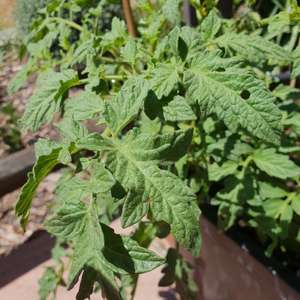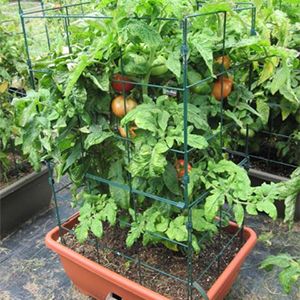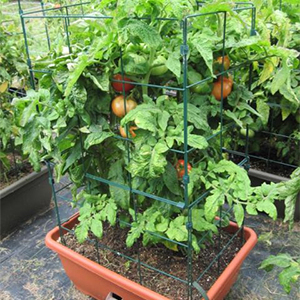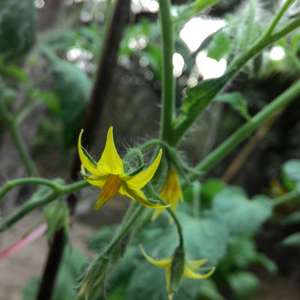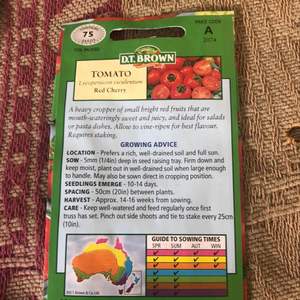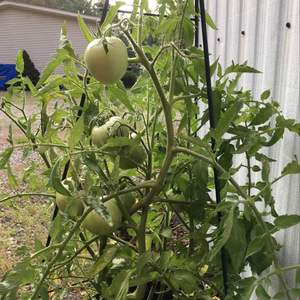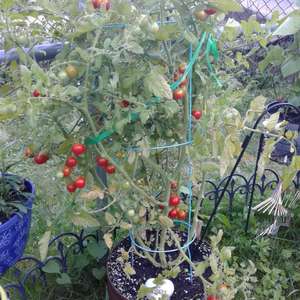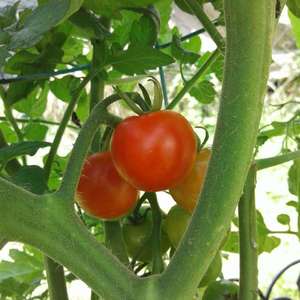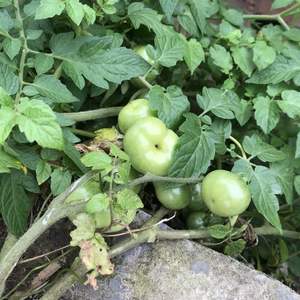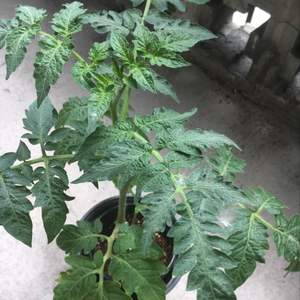文章
Miss Chen
2022年03月07日

The Celebrity tomato is a hybrid cultivar prized for its strong plants, disease and pest resistance, and robust production of fruit. If you've ever struggled growing garden or patio tomatoes that become vulnerable to pests or just don't produce very many tomatoes, the Celebrity may be a game changer for you. These tomatoes usually weigh in at half a pound each or more, and measure four inches across: the perfect size for a slicer! Its meaty texture and smooth globe shape make it a perfect sandwich tomato, but it can also be used in salads or in sauces, or chopped and simmered with fresh herbs to serve over pasta.
Among tomato-growing aficionados, this variety is known as a "semi determinate" plant, because after reaching its full height of 3-4 feet, it continues to produce fruit until frost (unlike determinate tomatoes that have a "bush" habit and finite fruiting period/single crop, or indeterminate tomato plants that continue to sprawl and produce fruit throughout their growth season (like cherry tomatoes)
Because they produce such an abundance of large fruits, these plants definitely need cages or stakes to keep them upright. Even with cages, you may find you want to use some plant ties for extra support, especially as fruits grow larger. If the vines seem too heavy with fruit you can always pluck some tomatoes just before they fully ripen, and finish ripening them in a sunny windowsill (indoors, or squirrels might start snacking on them).
Scientific Name Solanum lycopersicum, cultivar 'Celebrity'
Common Name Celebrity tomato
Plant Type Annual
Mature Size 3 to 4 ft. tall
Sun Exposure Full sun
Soil Type Fertile, well-drained
Soil pH 6.2 to 6.8
Bloom Time Early summer, fruits appear through fall
Flower Color Yellow
Hardiness Zones 5 to 8 (USDA)
Native Areas Native to Central and South America
Toxicity Green parts of plant may be toxic to dogs or cats
Growing Celebrity Tomatoes
Even inexperienced tomato growers may find this variety to be relatively trouble free. It's resistant to many pests and diseases, and has a robust growth habit. It also can be grown easily in containers, Use a large container that's at least five gallons, to give your plants plenty of root space, and make sure the container has good drainage.
Soil
Tomatoes like a rich, well-drained soil. It's important to add new soil and amendments to the garden area where tomatoes are grown each season, and to rotate nightshade crops, to benefit from optimal soil nutrition. The Celebrity tomato does best in a slightly acidic soil. You may also want to consider companion plantings best for tomatoes.
Light
Two words: full sun. Celebrity tomatoes should be grown in full sun.
Water
Watering at the base of the plant with a watering can or drip hose, instead of using a sprinkler or hose from above, is recommended to help prevent spread of blight or disease. (Rain is good too!) Water in the morning or evening on dry days, and avoid watering during the hottest part of the day in summer. Tomatoes like plenty of water, but they do not like wet feet. If your tomato plants are pot grown they will need to be watered more often. Good drainage is essential to prevent root rot and overwatering may cause leaves to turn yellow.
Temperature and Humidity
The ideal temperature for tomato plants to blossom, fruit and ripen falls in the 70 to 85 degree F. range.1 Being such a hardy plant, variations in temperature probably won't do too much damage to Celebrity tomato plants, but if a heat wave crops up, be sure to water with cool water in the morning and again in the evening so the foliage doesn't dry out. Too much humidity may increase susceptibility to mold or mildew, but the Celebrity has been bred to resist such problems. Even though Celebrity is more a bush type of plant, it is important to leave plenty of space between tomatoes planted in a row in the garden. Good air circulation will help prevent many of the disease problems that plague your plants.
Common Pests and Diseases
This hardy hybrid plant is resistant to verticillium wilt, fusarium wilt, and tobacco mosaic virus, as well as nematodes. Tomato fruits are tempting to birds and small wildlife, so you may need to protect them with netting if this is a problem in your garden.
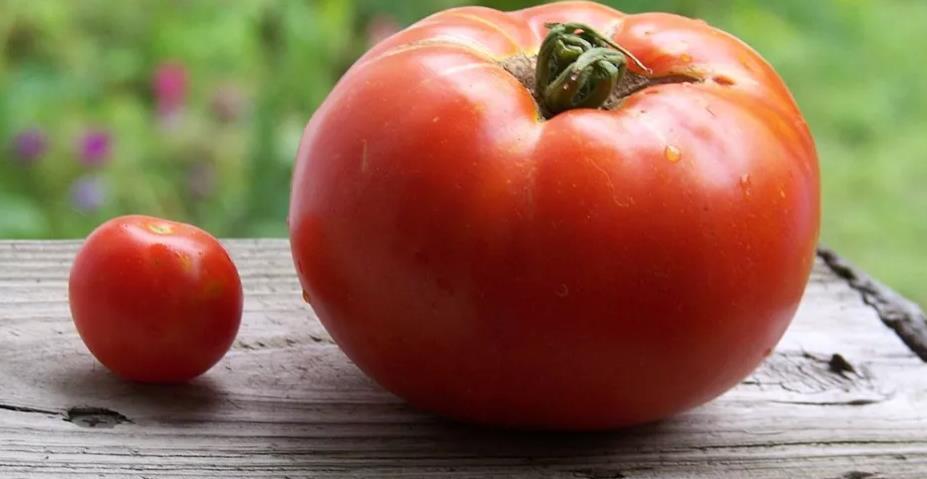
Growing Celebrity Tomatoes from Seed
With the right set up, growing tomatoes from seed is fairly straightforward. Germination will be dependent on light, heat and moisture but most tomato seeds have a good germination rate. Use a seed starting mix and follow the instructions on the seed packet. A greenhouse is ideal for starting seeds for the vegetable and flower gardens but you can grow tomatoes from seed in a sunny windowsill. Once the seedlings emerge, they will begin to reach for the sun, so remember to turn the pots regularly to keep the plants from becoming leggy.
You will need to harden off your tomato seedlings before planting them in the garden. You can accomplish this by exposing them to outdoor temperatures for increasingly longer periods of time over a week or several days. Choose good-sized containers for transplanting your seedlings, or plant in your garden once the seedlings are at least six inches tall, and all danger of frost has passed.
Potting and Repotting
Most tomatoes grow easily in containers, with a few simple guidelines to follow, and Celebrity tomatoes are no exception. The most important tip for growing tomatoes in pots is to make sure the pots are big enough! Tomato root systems require a good amount of space and good drainage. Once transplanted a light watering will help avoid transplant shock. When you are ready to plant out in the garden, dig a deep hole and remove the seed leaves and up to several sets of lower leaves depending on the size of your seedlings. You can bury up to a third of the plant in the soil which encourages a strong root system and helps the roots take up available water.
Among tomato-growing aficionados, this variety is known as a "semi determinate" plant, because after reaching its full height of 3-4 feet, it continues to produce fruit until frost (unlike determinate tomatoes that have a "bush" habit and finite fruiting period/single crop, or indeterminate tomato plants that continue to sprawl and produce fruit throughout their growth season (like cherry tomatoes)
Because they produce such an abundance of large fruits, these plants definitely need cages or stakes to keep them upright. Even with cages, you may find you want to use some plant ties for extra support, especially as fruits grow larger. If the vines seem too heavy with fruit you can always pluck some tomatoes just before they fully ripen, and finish ripening them in a sunny windowsill (indoors, or squirrels might start snacking on them).
Scientific Name Solanum lycopersicum, cultivar 'Celebrity'
Common Name Celebrity tomato
Plant Type Annual
Mature Size 3 to 4 ft. tall
Sun Exposure Full sun
Soil Type Fertile, well-drained
Soil pH 6.2 to 6.8
Bloom Time Early summer, fruits appear through fall
Flower Color Yellow
Hardiness Zones 5 to 8 (USDA)
Native Areas Native to Central and South America
Toxicity Green parts of plant may be toxic to dogs or cats
Growing Celebrity Tomatoes
Even inexperienced tomato growers may find this variety to be relatively trouble free. It's resistant to many pests and diseases, and has a robust growth habit. It also can be grown easily in containers, Use a large container that's at least five gallons, to give your plants plenty of root space, and make sure the container has good drainage.
Soil
Tomatoes like a rich, well-drained soil. It's important to add new soil and amendments to the garden area where tomatoes are grown each season, and to rotate nightshade crops, to benefit from optimal soil nutrition. The Celebrity tomato does best in a slightly acidic soil. You may also want to consider companion plantings best for tomatoes.
Light
Two words: full sun. Celebrity tomatoes should be grown in full sun.
Water
Watering at the base of the plant with a watering can or drip hose, instead of using a sprinkler or hose from above, is recommended to help prevent spread of blight or disease. (Rain is good too!) Water in the morning or evening on dry days, and avoid watering during the hottest part of the day in summer. Tomatoes like plenty of water, but they do not like wet feet. If your tomato plants are pot grown they will need to be watered more often. Good drainage is essential to prevent root rot and overwatering may cause leaves to turn yellow.
Temperature and Humidity
The ideal temperature for tomato plants to blossom, fruit and ripen falls in the 70 to 85 degree F. range.1 Being such a hardy plant, variations in temperature probably won't do too much damage to Celebrity tomato plants, but if a heat wave crops up, be sure to water with cool water in the morning and again in the evening so the foliage doesn't dry out. Too much humidity may increase susceptibility to mold or mildew, but the Celebrity has been bred to resist such problems. Even though Celebrity is more a bush type of plant, it is important to leave plenty of space between tomatoes planted in a row in the garden. Good air circulation will help prevent many of the disease problems that plague your plants.
Common Pests and Diseases
This hardy hybrid plant is resistant to verticillium wilt, fusarium wilt, and tobacco mosaic virus, as well as nematodes. Tomato fruits are tempting to birds and small wildlife, so you may need to protect them with netting if this is a problem in your garden.

Growing Celebrity Tomatoes from Seed
With the right set up, growing tomatoes from seed is fairly straightforward. Germination will be dependent on light, heat and moisture but most tomato seeds have a good germination rate. Use a seed starting mix and follow the instructions on the seed packet. A greenhouse is ideal for starting seeds for the vegetable and flower gardens but you can grow tomatoes from seed in a sunny windowsill. Once the seedlings emerge, they will begin to reach for the sun, so remember to turn the pots regularly to keep the plants from becoming leggy.
You will need to harden off your tomato seedlings before planting them in the garden. You can accomplish this by exposing them to outdoor temperatures for increasingly longer periods of time over a week or several days. Choose good-sized containers for transplanting your seedlings, or plant in your garden once the seedlings are at least six inches tall, and all danger of frost has passed.
Potting and Repotting
Most tomatoes grow easily in containers, with a few simple guidelines to follow, and Celebrity tomatoes are no exception. The most important tip for growing tomatoes in pots is to make sure the pots are big enough! Tomato root systems require a good amount of space and good drainage. Once transplanted a light watering will help avoid transplant shock. When you are ready to plant out in the garden, dig a deep hole and remove the seed leaves and up to several sets of lower leaves depending on the size of your seedlings. You can bury up to a third of the plant in the soil which encourages a strong root system and helps the roots take up available water.
0
0
NathPhoL
2019年03月28日

Preparing 2 species of tomato seedling & transplanted at Kasetsart University, Bangkok, Thailand

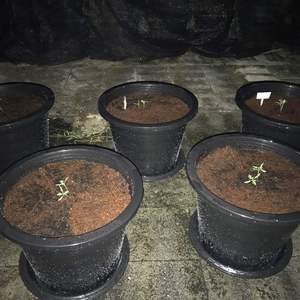


0
0
文章
Miss Chen
2018年07月22日

Vine-variety cucumbers, Cucumis sativus, require a lot of space to produce a healthy, continuous crop throughout the season. Using tomato cages to train cucumbers for vertical growth gives the plants lots of breathing room, aids in the formation of perfectly straight fruits and helps keep pests and soil-borne diseases at bay. When garden space is at a premium, training cucumbers vertically can also free up a great deal of garden real estate.
Play in the Dirt

Cucumbers favor well-draining, slightly acidic soil with a pH level of 5.8 to 6.5. Have the soil tested to determine its exact pH level and follow the the testing laboratory's recommendations regarding the application of amendments to correct the soil's pH. Incorporate 1 to 2 inches of organic compost and sand into the soil to create a nutrient-rich base for the new plants. The Clemson Cooperative Extension recommends adding a pre-planting application of a 5-10-10 fertilizer if soil has not been tested.
Feel the Heat

Cucumbers are tender annual vegetables that refuse to germinate in cold soil and thrive in temperatures ranging from 75 to 85 degrees Fahrenheit. For best results, start cucumber seeds directly outdoors after all chance of frost has passed and the soil reaches 70 degrees Fahrenheit at a depth of at least 1 inch.
Early to Rise

For an early harvest, start cucumber seeds indoors two to four weeks before the last expected frost date. Sow two to three seeds in peat pots or pellets and thin to one seedling in each pot after sprouting. Transplant the seedlings to the outdoor planting site when all chance of frost has passed, soil temperature measures 70 degrees Fahrenheit, and the seedlings have developed three to four sets of true leaves. Plant established seedlings at least 10 to 12 inches apart beneath tomato cages.
Containing the Cucumbers

Choose sturdily constructed tomato cages, at least 3 to 4 feet tall, that won't be easily rattled by a stiff breeze or the weight of the developing cucumbers. Insert the cages into the soil directly above the planting location and then sow 1 to 2 cucumber seeds inside each cage, at a depth of 1/2 to 1 inch, spaced approximately 4 to 6 inches apart. Once the vines begin to grow, nudge them toward the sides of the cages where their grabby tendrils can attach to the cage wires as they begin growing in an upright fashion. As the vines lengthen, they can be secured to the cages with loosely tied twine until they reach the top of the cage and start to hang down.
Water, Water, Everywhere

Cucumbers require consistent moisture during the growing season and especially when the blooms appear and fruits begin to set. When cucumbers are water-stressed, fruits can become misshapen and develop an unpleasant bitter flavor. Water cucumbers at least once per week, making sure to moisten the soil to a depth of at least 6 inches. If the soil is sandy, additional watering will be required to keep the soil adequately hydrated. To help with moisture retention throughout the season, add a 1- to 2-inch layer of organic mulch over the planting location.
It's Dinner Time
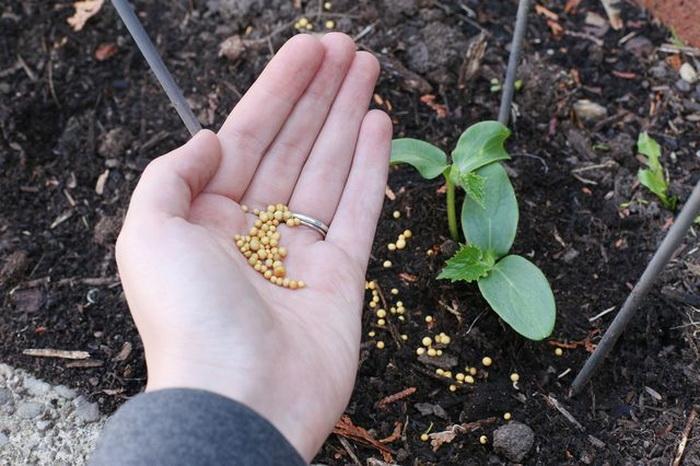
Cucumbers, which are moderate feeders, need a dose of nitrogen fertilizer when the plants start to vine and about a week after blooms first appear. The University of Minnesota recommends adding 1/2 cup of a 46-0-0 fertilizer for every 25 feet of planting space. Apply the fertilizer along the side of the row and approximately 4 to 6 inches from each plant. Additional feedings may not be necessary if the soil is enriched with organic compost.
Play in the Dirt

Cucumbers favor well-draining, slightly acidic soil with a pH level of 5.8 to 6.5. Have the soil tested to determine its exact pH level and follow the the testing laboratory's recommendations regarding the application of amendments to correct the soil's pH. Incorporate 1 to 2 inches of organic compost and sand into the soil to create a nutrient-rich base for the new plants. The Clemson Cooperative Extension recommends adding a pre-planting application of a 5-10-10 fertilizer if soil has not been tested.
Feel the Heat

Cucumbers are tender annual vegetables that refuse to germinate in cold soil and thrive in temperatures ranging from 75 to 85 degrees Fahrenheit. For best results, start cucumber seeds directly outdoors after all chance of frost has passed and the soil reaches 70 degrees Fahrenheit at a depth of at least 1 inch.
Early to Rise

For an early harvest, start cucumber seeds indoors two to four weeks before the last expected frost date. Sow two to three seeds in peat pots or pellets and thin to one seedling in each pot after sprouting. Transplant the seedlings to the outdoor planting site when all chance of frost has passed, soil temperature measures 70 degrees Fahrenheit, and the seedlings have developed three to four sets of true leaves. Plant established seedlings at least 10 to 12 inches apart beneath tomato cages.
Containing the Cucumbers

Choose sturdily constructed tomato cages, at least 3 to 4 feet tall, that won't be easily rattled by a stiff breeze or the weight of the developing cucumbers. Insert the cages into the soil directly above the planting location and then sow 1 to 2 cucumber seeds inside each cage, at a depth of 1/2 to 1 inch, spaced approximately 4 to 6 inches apart. Once the vines begin to grow, nudge them toward the sides of the cages where their grabby tendrils can attach to the cage wires as they begin growing in an upright fashion. As the vines lengthen, they can be secured to the cages with loosely tied twine until they reach the top of the cage and start to hang down.
Water, Water, Everywhere

Cucumbers require consistent moisture during the growing season and especially when the blooms appear and fruits begin to set. When cucumbers are water-stressed, fruits can become misshapen and develop an unpleasant bitter flavor. Water cucumbers at least once per week, making sure to moisten the soil to a depth of at least 6 inches. If the soil is sandy, additional watering will be required to keep the soil adequately hydrated. To help with moisture retention throughout the season, add a 1- to 2-inch layer of organic mulch over the planting location.
It's Dinner Time

Cucumbers, which are moderate feeders, need a dose of nitrogen fertilizer when the plants start to vine and about a week after blooms first appear. The University of Minnesota recommends adding 1/2 cup of a 46-0-0 fertilizer for every 25 feet of planting space. Apply the fertilizer along the side of the row and approximately 4 to 6 inches from each plant. Additional feedings may not be necessary if the soil is enriched with organic compost.
1
0
文章
Miss Chen
2018年07月14日

Eggplants (Solanum melongena) do not have a male or female gender, but they are endowed with cross-pollinating male and female flowers on each plant. We tend to think of the eggplant as a vegetable, but like the tomato, it is classified as a fruit. Fruit or veggie, eggplants do not have a gender.
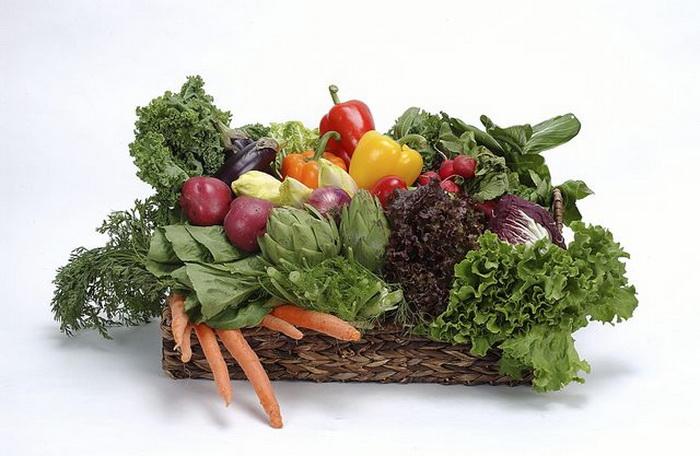
Dimple Differences
Two types of eggplant may develop on one plant, and that is likely the reason the myth of gender got started. One type has a roundish dimpled area at the blossom end, and the other type has a more oval-shaped dimpled area. The oval-dimpled eggplants are said to have more seeds and be less meaty than the roundish dimpled eggplants. Agriculture experts at the University of Illinois Extension describe the differences as a product of reproduction, not differences of gender.
Good Things About Eggplants
Eggplants love hot weather and grow well where more tender, leafy vegetables may wilt. They like growing conditions similar to tomatoes; they are from the same nightshade family of plants. Eggplants thrive in direct sunlight for six to eight hours per day.
There are several to grow , including egg-shaped 'Black Bell' and the long, slender variety called 'Ichiban.' The dimple differences can appear on fruit from every variety.
Easy To Grow
Once you have found the warm spot in the garden to grow your eggplants, start seeds or seedlings when nighttime temperatures are consistently at or above 65 degrees Fahrenheit. Their root systems are subject to cold damage and do not recover easily once they are affected. Allow 2 to 3 feet of growing space between plants. Give eggplant a steady supply of moisture but not enough to create soggy soil conditions. Test for dryness by inserting your finger in the soil; it should feel moist up to the first joint. A soaker hose or drip system is ideal for giving a slow, steady supply of moisture.
Harvest Time and the Dimples
Eggplants bloom with violet flowers in mid- to late summer, and small fruit begin to develop. The time from seed germination to harvest is 16 to 24 weeks, depending on the variety and growing conditions. Plants with a heavy load of fruit may fall over and need to be staked or propped up with a small tomato cage.

Eggplants are ready to pick when their skin is bright and glossy. If they are dull colored, the fruit has been left too long on the plant and may be bitter. Now is the time to turn the fruit upside down, see whether you have a round-dimpled eggplant or an oval-dimpled eggplant, and begin the enjoyment of and eating your eggplant.

Dimple Differences
Two types of eggplant may develop on one plant, and that is likely the reason the myth of gender got started. One type has a roundish dimpled area at the blossom end, and the other type has a more oval-shaped dimpled area. The oval-dimpled eggplants are said to have more seeds and be less meaty than the roundish dimpled eggplants. Agriculture experts at the University of Illinois Extension describe the differences as a product of reproduction, not differences of gender.
Good Things About Eggplants
Eggplants love hot weather and grow well where more tender, leafy vegetables may wilt. They like growing conditions similar to tomatoes; they are from the same nightshade family of plants. Eggplants thrive in direct sunlight for six to eight hours per day.
There are several to grow , including egg-shaped 'Black Bell' and the long, slender variety called 'Ichiban.' The dimple differences can appear on fruit from every variety.
Easy To Grow
Once you have found the warm spot in the garden to grow your eggplants, start seeds or seedlings when nighttime temperatures are consistently at or above 65 degrees Fahrenheit. Their root systems are subject to cold damage and do not recover easily once they are affected. Allow 2 to 3 feet of growing space between plants. Give eggplant a steady supply of moisture but not enough to create soggy soil conditions. Test for dryness by inserting your finger in the soil; it should feel moist up to the first joint. A soaker hose or drip system is ideal for giving a slow, steady supply of moisture.
Harvest Time and the Dimples
Eggplants bloom with violet flowers in mid- to late summer, and small fruit begin to develop. The time from seed germination to harvest is 16 to 24 weeks, depending on the variety and growing conditions. Plants with a heavy load of fruit may fall over and need to be staked or propped up with a small tomato cage.

Eggplants are ready to pick when their skin is bright and glossy. If they are dull colored, the fruit has been left too long on the plant and may be bitter. Now is the time to turn the fruit upside down, see whether you have a round-dimpled eggplant or an oval-dimpled eggplant, and begin the enjoyment of and eating your eggplant.
0
0



